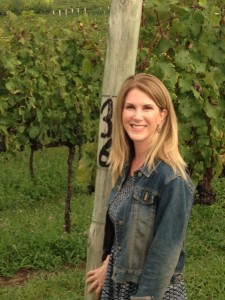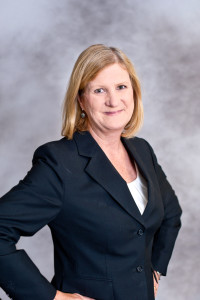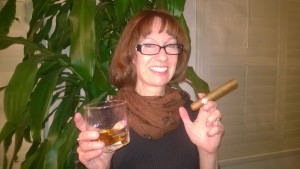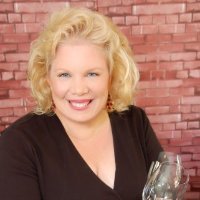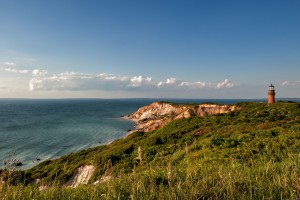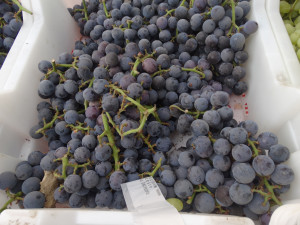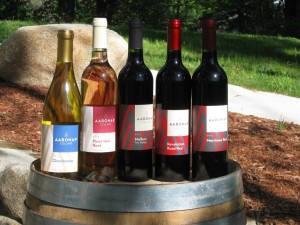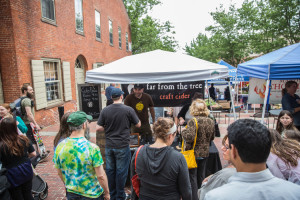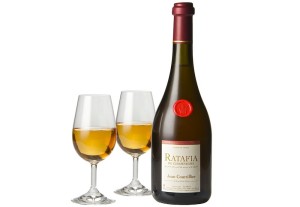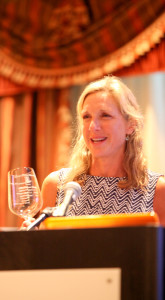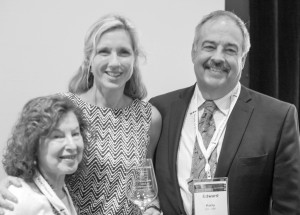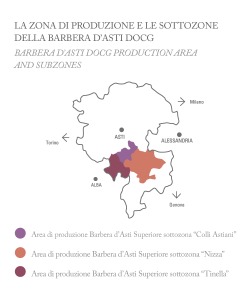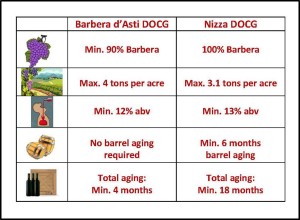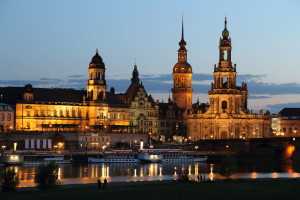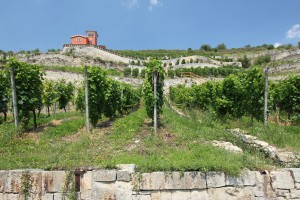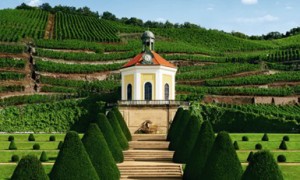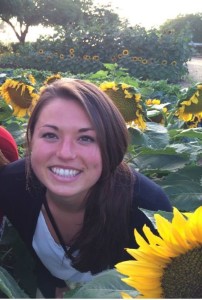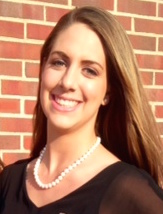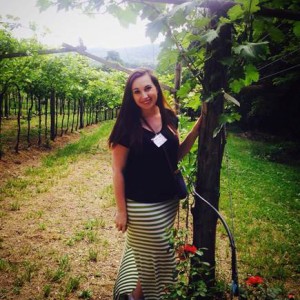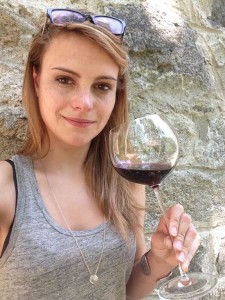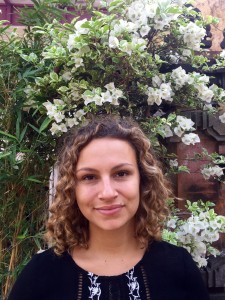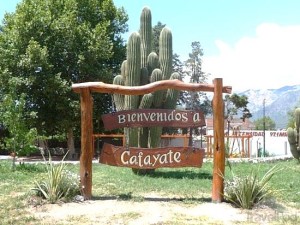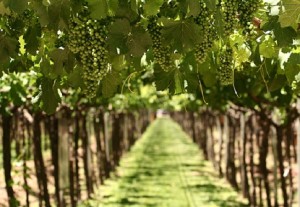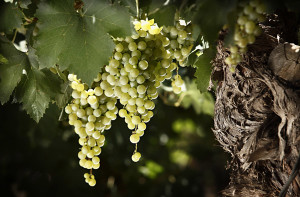Today we have a guest post from renowned Wine and Spirits Educator Harriet Lembeck. Read on to hear about Harriet’s recent wine trip to the Champagne Region!
Holiday in Champagne!
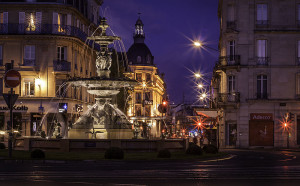
Photo of the Argence Fountain in Troyes by Serge Collana, via Wikimedia Commons
If you haven’t thought of Champagne as a holiday destination, now’s the time! The Champenois, with tourist boards in both La Marne and in Aube to the south, are ready for you and your family.
Champagne symbolizes success, celebration, joy, and prestige. It also symbolizes sharing, and has done so since the time that King Clovis, the first French King, was crowned there in 481. Today, at least 30 crowned Kings later, the Champagne industry employs 30,000 people.
A visit to Champagne will show you new signs on touristic routes, new hotels, oeno logical museums, timbered churches, the Lac du Der (an artificial lake in the Argonne Forest, which regulates the water flow of the Seine) where you can ride in small boats, plus six UNESCO World Heritage Sites in the départements of the Marne. And don’t forget the famed 3-star Restaurant Les Crayères, established by the now-retired, renowned chef Gérard Boyer.
Structuring Your Visit
Start your trip as I did, with a flight to Charles De Gaul (CDG) airport in Paris. Then, board the TGV high-speed train towards Strasbourg, and get off 30 minutes later at the first stop, the Gare (station) Champagne-Ardennes, a region of NE France. Then a short taxi or bus ride will take you to the center of Reims, about 20 minutes away.
Nearby, the cellars of the House of Taittinger are built on the site of the old, destroyed L’Abbaye de Saint Nicaise. The first level has remains from the Thirteenth Century, while the second level dates to the Third Century, with its Gallo-Roman chalk pits (crayères), dug by the Romans. The temperature in the cellars is a constant 20 degrees Celsius, and the humidity is 80%.
In World War I, the cellars were used as bomb shelters for families. FYI – the aromatic ‘Brut Reserve’ is the same as Taittinger’s ‘La Francais’ in the US. Personally, I feel that nothing can surpass the latest expression of Comtes de Champagne Blanc de Blancs 2005, a Champagne that is never released until it is 10 years old.
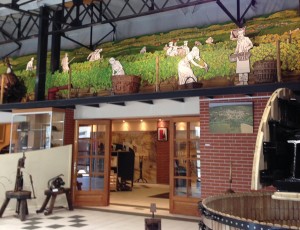
The entrance to Dom Caudron (note the wooden presses and the mural of vineyard work) photo by Bill Lembeck, CWE, CSS
In the Marne Valley, where 66% of the Champagne vineyards are located, you would enjoy a visit to the Champagne cooperative Dom Caudron, in Vrigny. In 1929, a priest named Aimé Caudron had the first press in the village. Since 2010, this is a cooperative with 75 grower-members. In this part of the Marne Valley, the Pinot Meunier grows very well, with many hectares of old vines.
Dom Caudron specializes in that grape, and they produce exceptionally fruity 100% Pinot Meunier Champagnes in different styles (Note: there are about 16 companies in the area producing 100% Pinot Meunier Champagnes). Dom Caudron still uses antique wooden presses, and has a small museum with a short film on vineyard work. Their “Prediction” rosé Champagne, Le Meunier au Singulier, is fruity and rich. The back label tells the harvest date and the disgorgement date, among other information.
Champagne Charlier, in the Vallée de la Marne, is a small, family-owned Champagne house – a “single grower” in today’s parlance. This category has been brought to the fore by wine importer Terry Theise, starting around the year 2000. It is now quite familiar and acceptable to serve Champagnes that are not exclusively from the famous houses.
At Champagne Charlier, they use their own grapes, do not buy any grapes, and do not sell any grapes. Their Champagnes are sold mostly in France, but some go to Belgium, England, Japan, and Italy. All of their Champagnes are aged in large oak casks from Alsace. There is no stainless steel. An oversize cask has been converted to a charming sitting room for a few people. My favorite Champagne, made mostly with Chardonnay, is their fragrant Cuvée Spéciale Club Millésimé 2004, produced from the oldest vines that have the smallest yields. The property is very decorative – with carved barrels, painted murals, and copious flowers.
A walk down the Avenue de Champagne in Épernay shows large buildings and mansions owned by many of the most prestigious Champagne houses – one right after the other. It begins at the Tourist Office, and continues for 1 km, on both sides of the wide street.
Leaving the Marne for the Aube
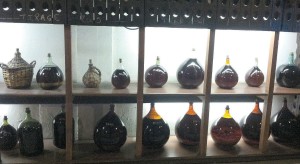
Flasks of liqueur for dosage at Drappier – photo by Bill Lembeck CWE, CSS
A visit to Urville, in the Aube, takes a little over an hour. While there, a visit to Drappier should not be missed. The home and furnishings and cellars are exquisitely mounted. Those wine cellars were built in 1152 by Cistercian monks, and the Drappier family has been cultivating the vineyards for the last two centuries. The Jurassic-era Kimmeridgian soil is like that of the Grand Cru Chablis. The white chalky soils, many former oyster beds, are best for Chardonnay, while the little valleys with stones and minerals further north are best for Pinot Noir.
Michel Drappier is the seventh-generation winemaker. His son is studying enology, while his daughter is hand-selling Drappier Champagnes with the importing company Dreyfus-Ashby in New York. Wines are made in the original stone cellars. Right now, there are 30,000 liters in wood for the reserves. A large egg-shaped barrel is being studied. Michel says it is the most perfect shape. Currently, it is the only one in Champagne.
The entire vineyard is organic, and one-third of it has now been certified. Even the Martinique sugar cane used for the dosages is organic. These dosages, incidentally, are aged for 15 to 25 years in Limousin oak tanks. It gets thick and concentrated, and one drop per bottle is all that is necessary. These “liquors” are stored in glass demijohns, some for more than 50 years. Further, Michel is using less sulfur, to reduce chances of reduction in
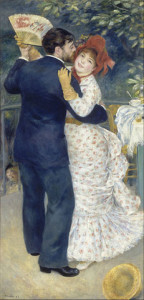
Pierre Auguste Renoir’s “Dance in the Country” – photo via Google Art Project
his wines. He ferments at very low temperatures, noting that longer, cooler fermentations result in smaller bubbles.
Michel Drappier is aiming to be Carbon-zero, and solar power provides 55% of his electricity needs. Further, he uses 99% recycled glass, cardboard and wood, and 85% soda glass from the north of Paris.
The Drappier “Grande Sendrée” 2006, with almost equal parts of Chardonnay and Pinot Noir, gets six years of bottle aging before release. Incidentally, this Champagne has been matched with Renoir’s painting “Dance in the Country” as part of a collection of ten independent Aube Champagnes matched to ten Renoir paintings.
Last Stop: Les Riceys
The municipality of Les Riceys, which consists of three villages, has three specific AOC/ AOP designations: Champagne (designated in 1936); Coteaux Champenois (designated in 1970) and Rosé des Riceys (designated in 1947). This region is so far from Reims and Épernay that it never had any of its vineyards designated as Grand- or Premier-Crus.
Nevertheless, still red wines from Les Riceys are used by other Champagne producers when making rosé Champagnes. Nicolas Feuillatte Cuvée Palmes d’Or Rosé, for example, is made from Pinot Noirs from the village of Bouzy (using 50%) for power, and from Les Riceys (50%) for fine aromas. Champagne Morize Père et Fils Brut Réserve and the Morize Rosé des Riceys 2011 are very fruity examples of those appellations. They go so well with food that they are often referred to as ‘gastronomic rosés.’
Wrap up your tour with a visit to the medieval city of Troyes, which was laid out like a Champagne cork. Illuminated red hearts proclaim this a “city of love.”

.
Harriet Lembeck, CWE, CSE is a prominent wine and spirits educator. She is president of the renowned Wine & Spirits Program, and revised and updated the textbook Grossman’s Guide to Wines, Beers and Spirits. She was the Director of the Wine Department for The New School University for 18 years. She may be contacted at hlembeck@mindspring.com.
This article was originally published in the article was originally published in Beverage Dynamics Magazine – reprinted with permission!
Are you interested in being a guest blogger or a guest SWEbinar presenter for SWE? Click here for more information!
